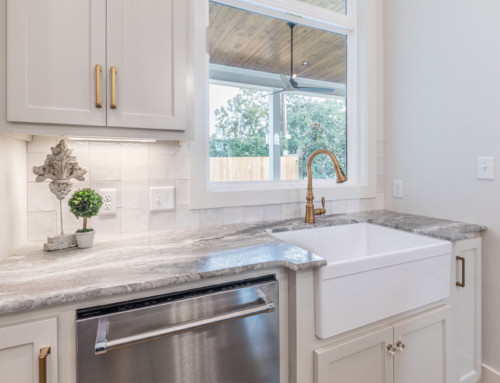The National Home Builders Association (NAHB) celebrates National Remodeling Month in May, but remodeling is popular year-round, and the industry is growing every year. Whether it’s a small cosmetic remodel such as replacing bathroom fixtures, or a major down-to-the-wall-studs overhaul of your kitchen or adding new space to your home, understanding the terminology your professional remodeler is using can be very helpful to ensure you get the finished project you want.
As you interview potential contractors, this glossary of common terms used by builders and remodelers will help you understand the language of your remodeling project — and help you avoid miscommunication with your contractor.
Allowance: A specific dollar amount allocated by a contractor for specified items in a contract for which the brand, model number, color, size or other details are not yet known.
Bid: A proposal to work for a certain amount of money, based on plans and specifications for the project.
Building Permit: A document issued by a governing authority, such as a city or parish building department, granting permission to undertake a construction project.
Call-back: An informal term for a return visit by the contractor to repair or replace items the home owner has found to be unsatisfactory or that require service under the warranty.
Certified Graduate Remodeler (CGR): A professional designation program offered through the National Association of Home Builders Remodelers CouncilTM. To attain the CGR designation, a remodeler must take a specified number of continuing education courses and comply with a strict code of ethics.
Certified Aging-in-Place Specialist (CAPS): CAPS professionals have learned strategies and techniques to meet the home modification needs of home owners who want to continue living in their homes safely, independently and comfortably regardless of age or ability level. CAPS graduates pledge to uphold a code of ethics and are required to maintain their designation by attending education programs and participating in community service.
Change Order: This is written authorization to the contractor to make a change or addition to the work described in the original contract. The change order should reflect any changes in cost.
Cost-plus Contract: A contract between a contractor and home owner that is based on the accrued cost of labor and materials plus a percentage for profit and overhead — also known as a time-and-materials contract.
Draw: A designated payment that is “drawn” from the total project budget to pay for services completed to date. A draw schedule is typically established in the contract.
Lien Release: A document that voids the legal right of a contractor, subcontractor or supplier to place a lien against your property. A lien release assures you that the remodeler has paid subcontractors and suppliers in full for labor and materials.
Mechanic’s Lien: A lien obtained by an unpaid subcontractor or supplier through the courts. When enforced, real property — such as your home — can be sold to pay the subcontractor or supplier. If a subcontractor or supplier signed a lien release, then this lien cannot be enforced.
Plans and Specifications: These are drawings for the project, and a detailed list or description of the known products, materials, quantities and finishes to be used.
Punch List: A list of work items to be completed or corrected by the contractor, typically near or at the end of a project.
Subcontractor: A person or company hired directly by the contractor to perform specialized work at the job site — sometimes referred to as a trade contractor.
Tips provided by the National Home Builders Association. View the Acadian Home Builders Member Directory for member builders and remodelers.









